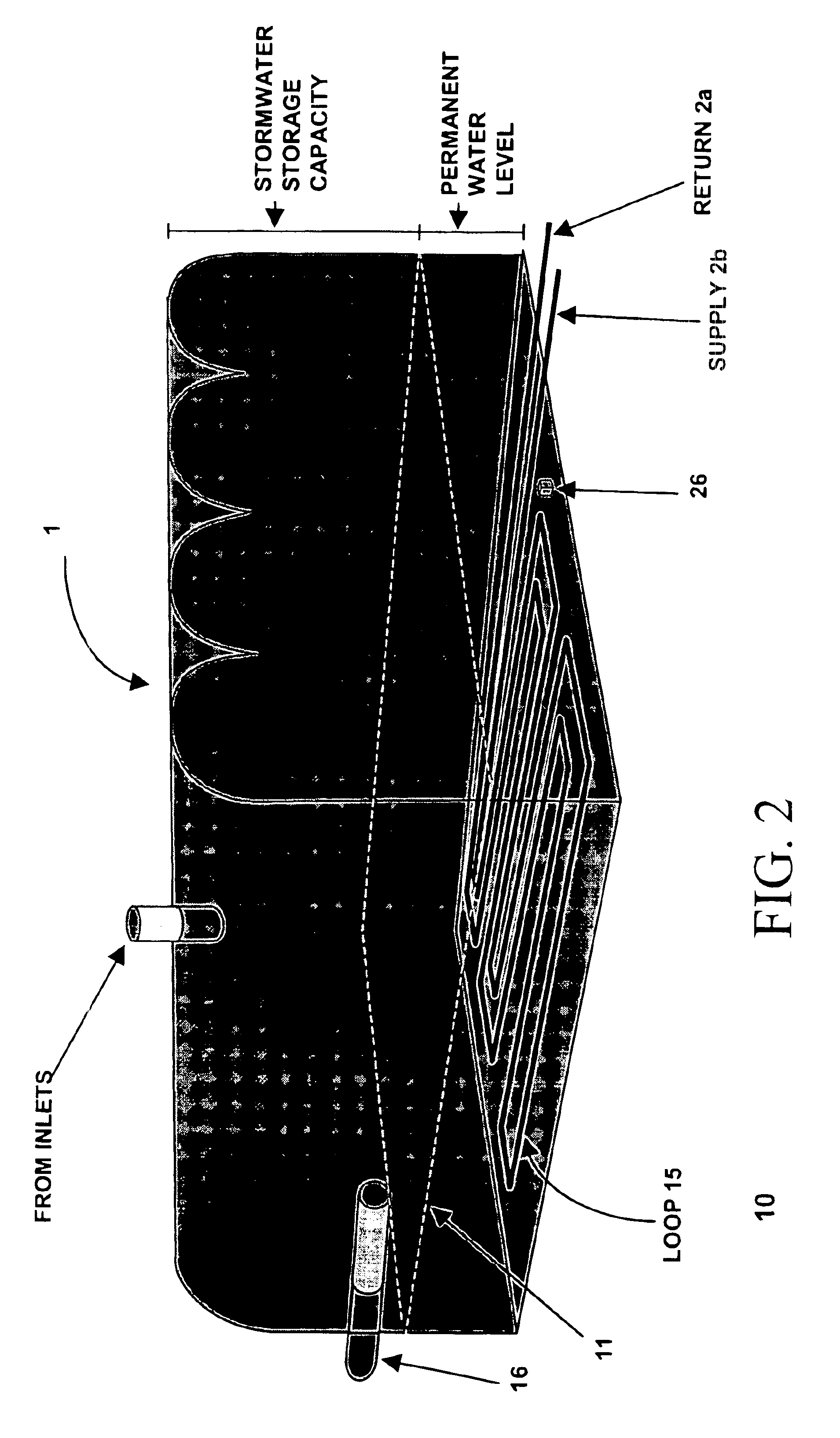Method and system for storm water system heat exchange
a technology of storm water and heat exchange, which is applied in the direction of indirect heat exchangers, heating types, lighting and heating apparatus, etc., can solve the problems of limited capacity, runoff may be much greater than the heat transfer coefficient between the coolant and the heat exchanger
- Summary
- Abstract
- Description
- Claims
- Application Information
AI Technical Summary
Benefits of technology
Problems solved by technology
Method used
Image
Examples
Embodiment Construction
[0032]FIGS. 1 and 2 illustrate an embodiment of the present invention that includes a closed loop heat exchanger system 1, 2a, 2b, 15 having connections by, for example pipes containing a fluid or gas heat exchanger medium, and other components. The components of this embodiment include a pair of heat exchangers portions 3, 15 connected by a loop 2a, 2b, and a pump 3 that serves as a circulator for the heat exchange medium. In an embodiment of the present invention, the circulator 3 moves the medium between an above ground heat exchanger 3, such as a radiator, for example, located in a building 4, and a below ground heat exchanger 15 that includes coils located within a storm water chamber system 1. The storm water chamber system 1 maintains a continuous level of contained runoff 11. An embodiment of the present invention further includes a storm water chamber system temperature sensing device 26, a structure internal temperature sensing device 6, which may include, for example, a t...
PUM
 Login to View More
Login to View More Abstract
Description
Claims
Application Information
 Login to View More
Login to View More - R&D
- Intellectual Property
- Life Sciences
- Materials
- Tech Scout
- Unparalleled Data Quality
- Higher Quality Content
- 60% Fewer Hallucinations
Browse by: Latest US Patents, China's latest patents, Technical Efficacy Thesaurus, Application Domain, Technology Topic, Popular Technical Reports.
© 2025 PatSnap. All rights reserved.Legal|Privacy policy|Modern Slavery Act Transparency Statement|Sitemap|About US| Contact US: help@patsnap.com



